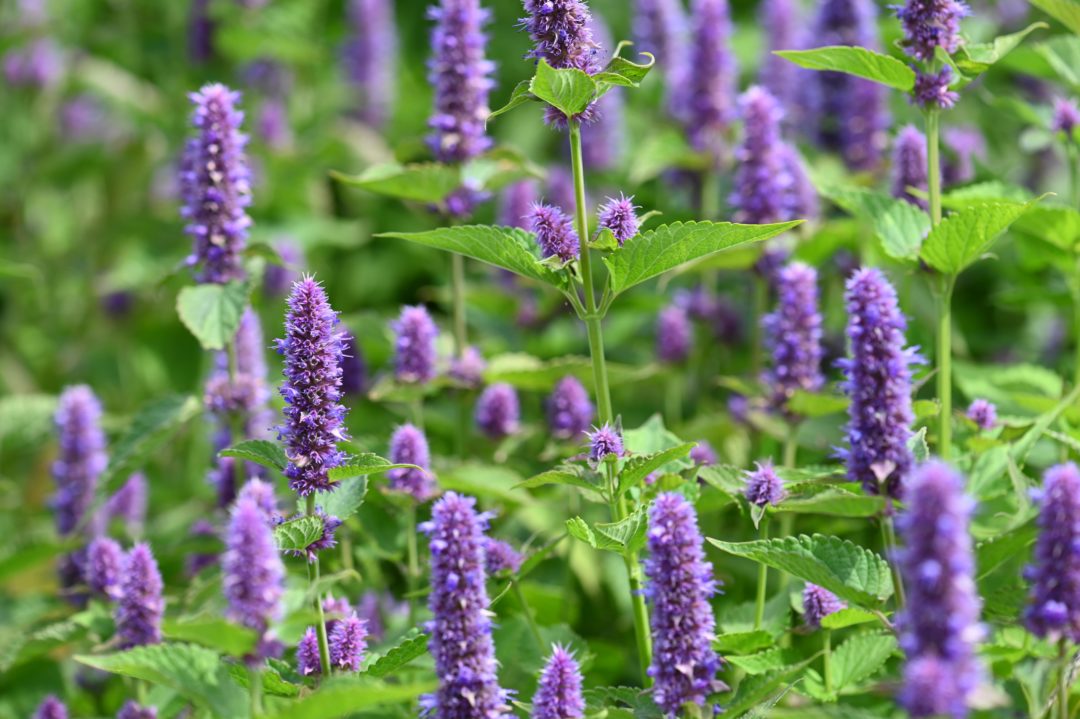A small perennial plant, Hyssop (Hyssopus officinalis) is an evergreen herb from the mint family. The plant is drought resistant, and thrives well in sandy soils, in warm climates with full sun. The flowers of the Hyssop plant bloom in the summer, presenting colors including white, red, pink, and deep purple. Hyssop is commonly seen throughout Europe, Asia, and parts of the middle east, and is now found in gardens throughout the United States.
Hyssop's unique smell can be described as sweet, while its taste is on the bitter (but still enjoyable) side. It is known in the culinary world as a natural flavor additive for a variety of foods and beverages including ice cream, frozen meals, baked goods, alcoholic beverages, liqueurs, and aperitifs. The famous French liqueurs Benedictine and Chartreuse contain hyssop as one of the main ingredients. As a tea it is commonly steeped and flavored with honey to taste.
Traditionally, Hyssop has been used in folk medicine, and its common uses have been referenced in biblical writings.
According to Essential Oils in Food Preservation, Flavor and Safety: “Hyssop essential oils demonstrate antibacterial, and antifungal properties are active against many pathogens. Even more, the oils show potential antifungal and antimicrobial activity against many food-borne pathogens, and are useful in order to improve organoleptic properties, to inhibit spoilage, and to increase shelf life of food products” (1).
Hyssop’s essential oil traditionally has been used as an expectorant for upper respiratory infections, throat irritation, and the symptoms of the common cold. A side note: Beekeepers have been known to use hyssop to produce nectar from which Western honey bees make an aromatic honey.
Uses of Hyssop in Ancient Times: Fast Facts (2)
- The Hebrew people called this herb azob, meaning "holy herb." It was used as a cleansing herb for sacred places
- The Romans used hyssop to bring protection from the plague. It was also used in an herbal wine.
- In ancient Greece, physicians valued hyssop for bronchial complaints such as inflammation of the throat and chest.
- In the early 17th and 18th centuries, hyssop tea and tincture were used to treat jaundice and dropsy.”
Hyssop is used both as a tea and a tincture. The bulk herb is steeped in hot water, while the tincture can be added directly to hot water to make tea, steeping is not necessary. When used for a sore throat, it is commonly sipped, gargled and swallowed, and due to the strong taste, honey is commonly added. Those who are pregnant or may become pregnant, should avoid hyssop. Also, hyssop may trigger an allergic response in those who are allergic to mint, lemon balm or catnip. As always, one should consult a healthcare provider.
References:
1) Science Direct- Hyssop (Hyssopus officinalis L.) Oils. Essential Oils in Food Preservation, Flavor and Safety, 2016
2) Encycopedia.com. Hyssop. June 2018; https://www.encyclopedia.com/plants-and-animals/plants/plants/hyssop#:~:text=The%20Hebrew%20people%20called%20this,an%20herbal%20wine%20containing%20hyssop.










